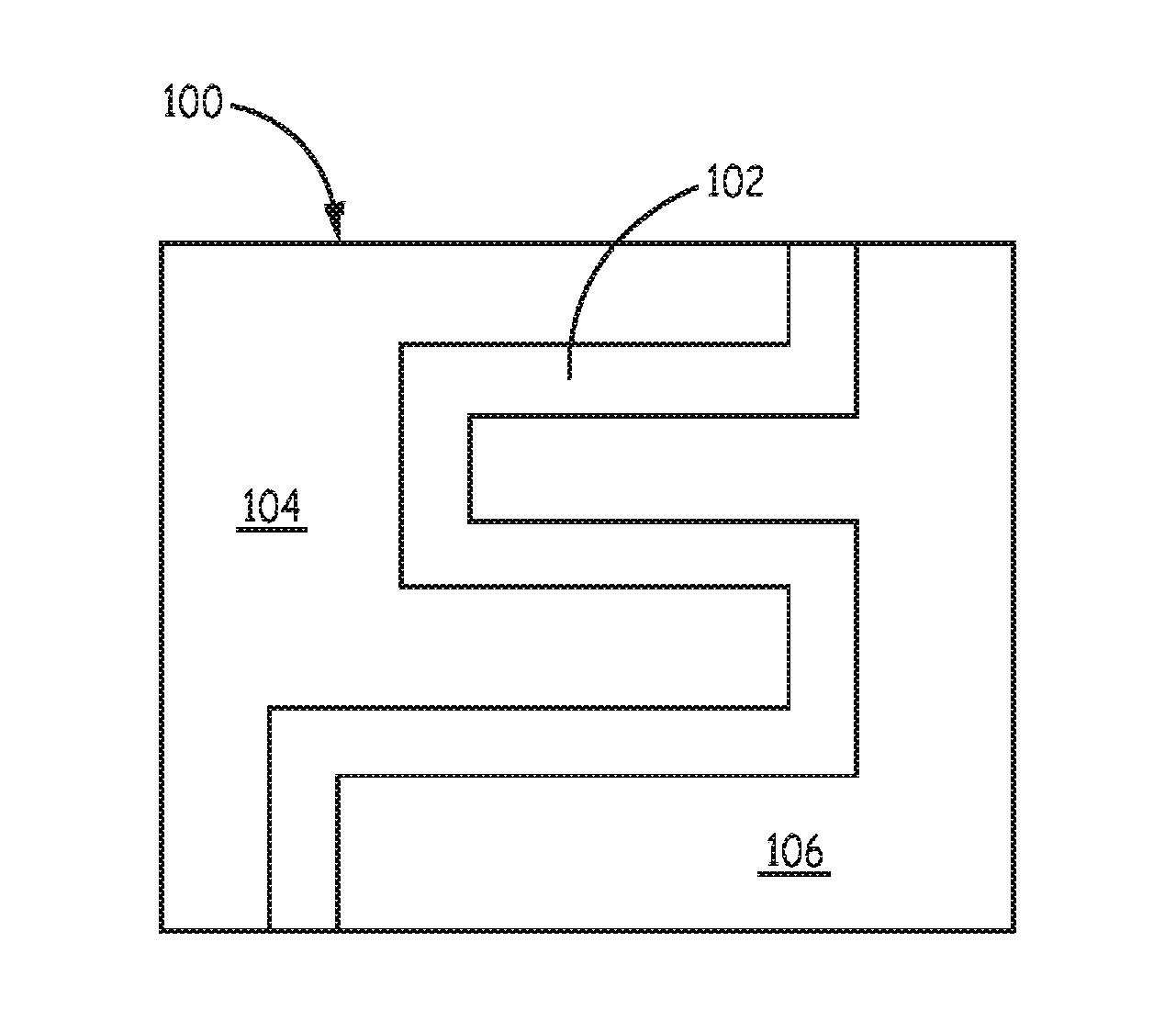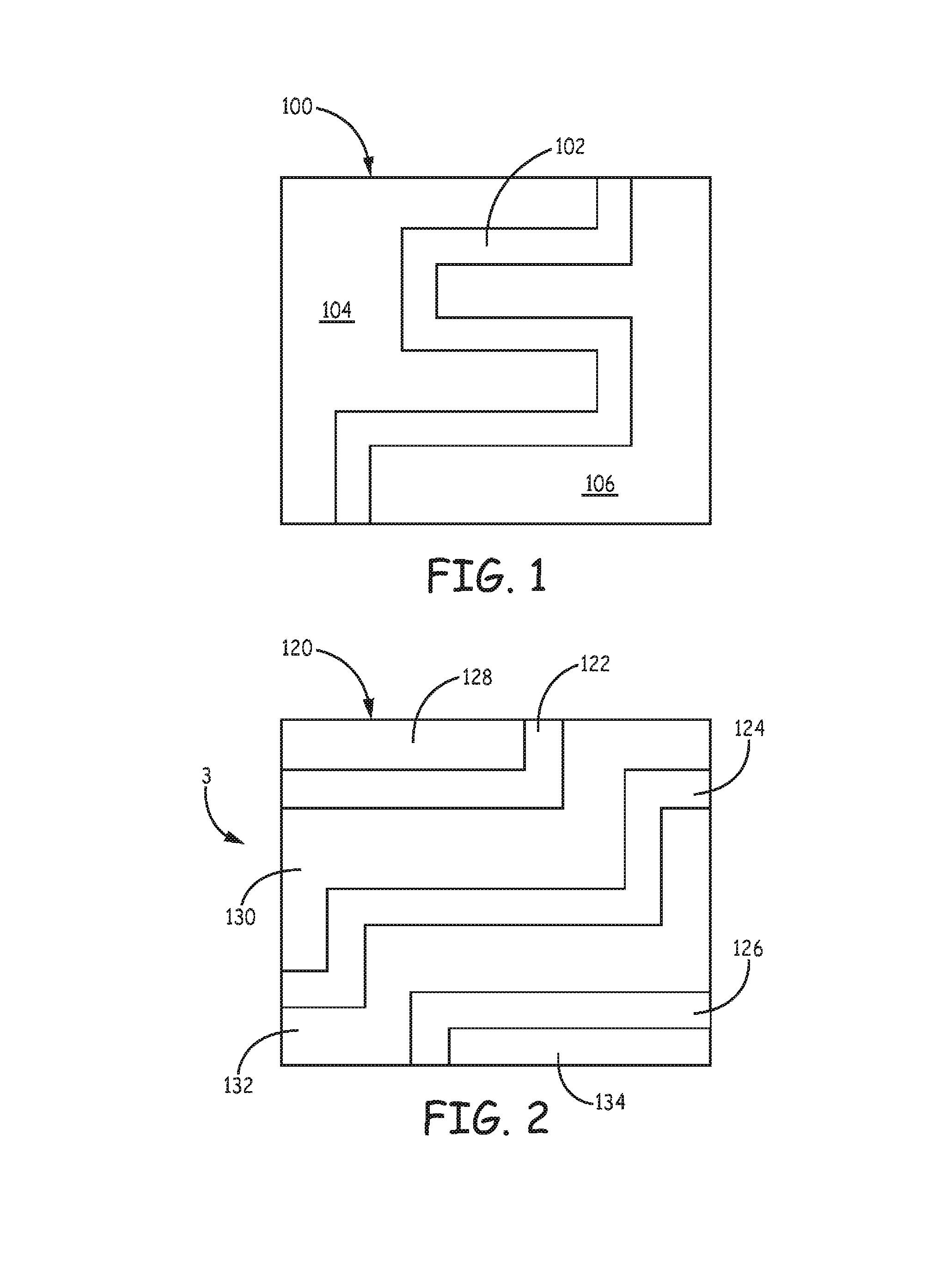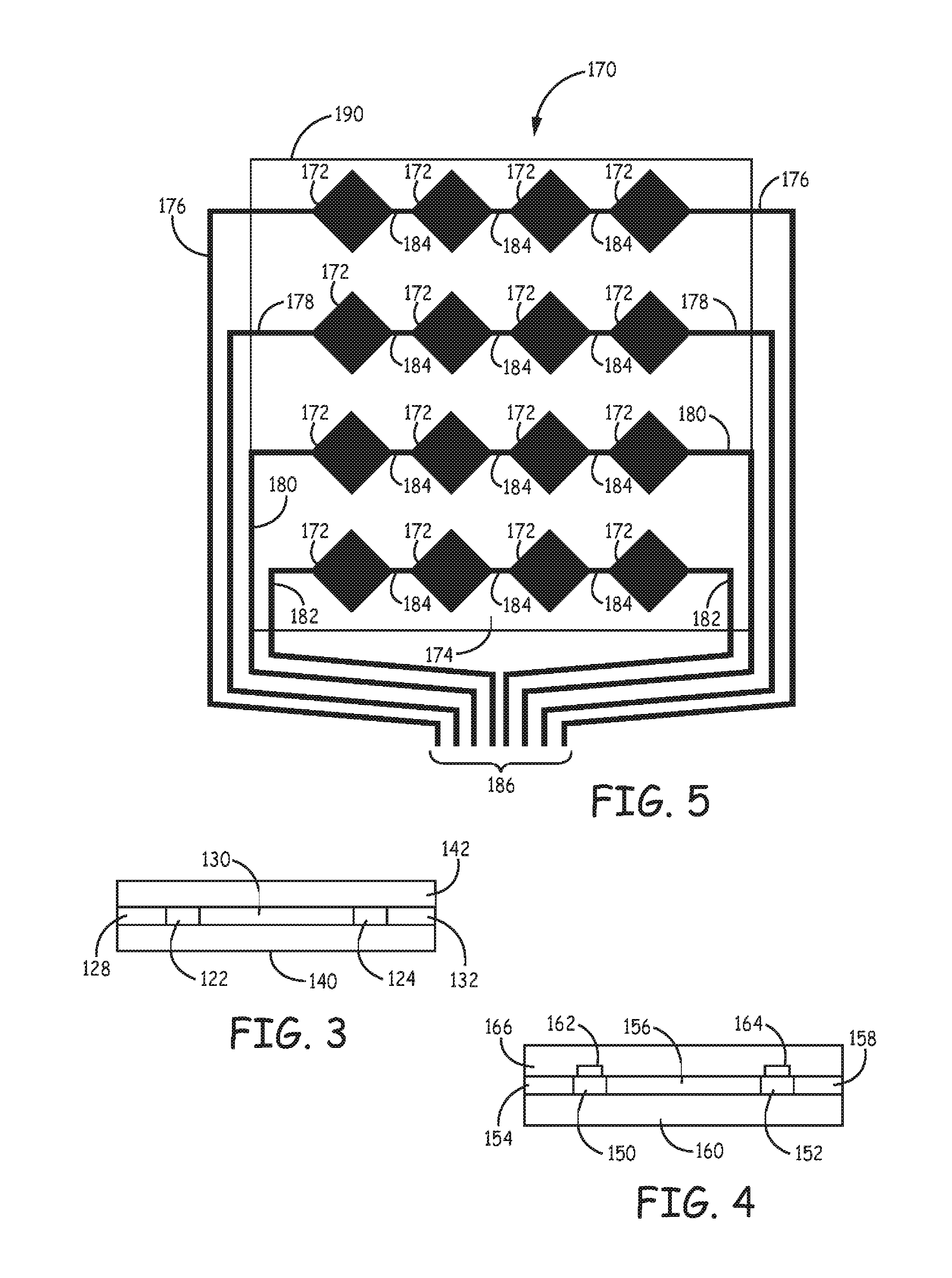Metal nanowire inks for the formation of transparent conductive films with fused networks
- Summary
- Abstract
- Description
- Claims
- Application Information
AI Technical Summary
Benefits of technology
Problems solved by technology
Method used
Image
Examples
example 1
Fusing Nanowire Inks with Hydrophilic Binder and Nitric Acid
[0082]This example tests the ability of a cellulose based polymer (CBP) to act as a binder and thickener for AgNW inks without interfering with the fusing process.
[0083]Initial AgNWs dispersions comprised deionized water and isopropyl alcohol. The inks also contained a binder of CBP as described above. In this Example, 15 samples were prepared using the base ink. Fusing solutions or ethanol were combined with some samples each in a ratio of 3:1 AgNW ink to fusing solution or ethanol by volume. The fusing solutions contained silver nitrate as specified above and between 15 μL / mL and 80 μL / mL of HNO3 in ethanol. The inks were then coated on a PET substrate using a Meyer rod or blade coating.
[0084]To dry the films, the films were heated in an oven in ambient atmosphere at 100° C. for 10 min. The properties of the films after heating are compared in Table 1. Films that were formed with an ink that included fusing solution had a...
example 2
Fusing Solution Compositions
[0086]This example tests the ability of various formulations of compositions to act as a fusing solution for AgNW inks to form desirable transparent conductive films.
[0087]Initial AgNWs dispersions comprised a solvent of deionized water and a small amount of isopropyl alcohol. The base ink also contained a binder of CBP as described above. Fusing solutions or ethanol were combined with form 12 distinct samples each in a ratio of 3:1 or 4:1 AgNW ink to fusing solution or ethanol by volume, and two additional samples were processed as the base ink. The fusing solutions contain between 0.05 mg / mL and 5 mg / mL metal ions and between 15 μL / mL and 80 μL / mL of HNO3 in ethanol (samples 7-10) or half of the above concentration of the ingredients (samples 11-14). The inks were then coated on a PET substrate using a Meyer rod or blade coating.
[0088]The films were then heated in an oven in ambient atmosphere at 100° C. for 10 min to dry the films. The properties of th...
example 3
Effect of Different AgNW Samples
[0090]This example tests the suitableness of various AgNW samples to act as an AgNW source for one ink systems
[0091]AgNWs inks were created in deionized water using AgNW from two different commercial sources (A and B). The inks contained CBP as the binder as described above. Fusing solutions or ethanol were then combined with some samples each in a ratio of 3:1 AgNW ink to fusing solution or ethanol by volume. The fusing solutions were composed of between 0.05 mg / mL and 5.0 mg / mL metal ions with between 8 μL / mL and 80 μL / mL of HNO3 in ethanol. The inks were then coated on a PET substrate using a Meyer rod or blade coating.
[0092]The films were then heated in an oven at 100° C. for 10 min to dry the films. The properties of the films after heating are compared in Table 3. Films formed with AgNWs from source A had higher sheet resistance when a fusing solution was not used and a lower sheet resistance when a fusing solution was used when compared to film...
PUM
| Property | Measurement | Unit |
|---|---|---|
| Time | aaaaa | aaaaa |
| Hydrophilicity | aaaaa | aaaaa |
Abstract
Description
Claims
Application Information
 Login to View More
Login to View More - R&D
- Intellectual Property
- Life Sciences
- Materials
- Tech Scout
- Unparalleled Data Quality
- Higher Quality Content
- 60% Fewer Hallucinations
Browse by: Latest US Patents, China's latest patents, Technical Efficacy Thesaurus, Application Domain, Technology Topic, Popular Technical Reports.
© 2025 PatSnap. All rights reserved.Legal|Privacy policy|Modern Slavery Act Transparency Statement|Sitemap|About US| Contact US: help@patsnap.com



